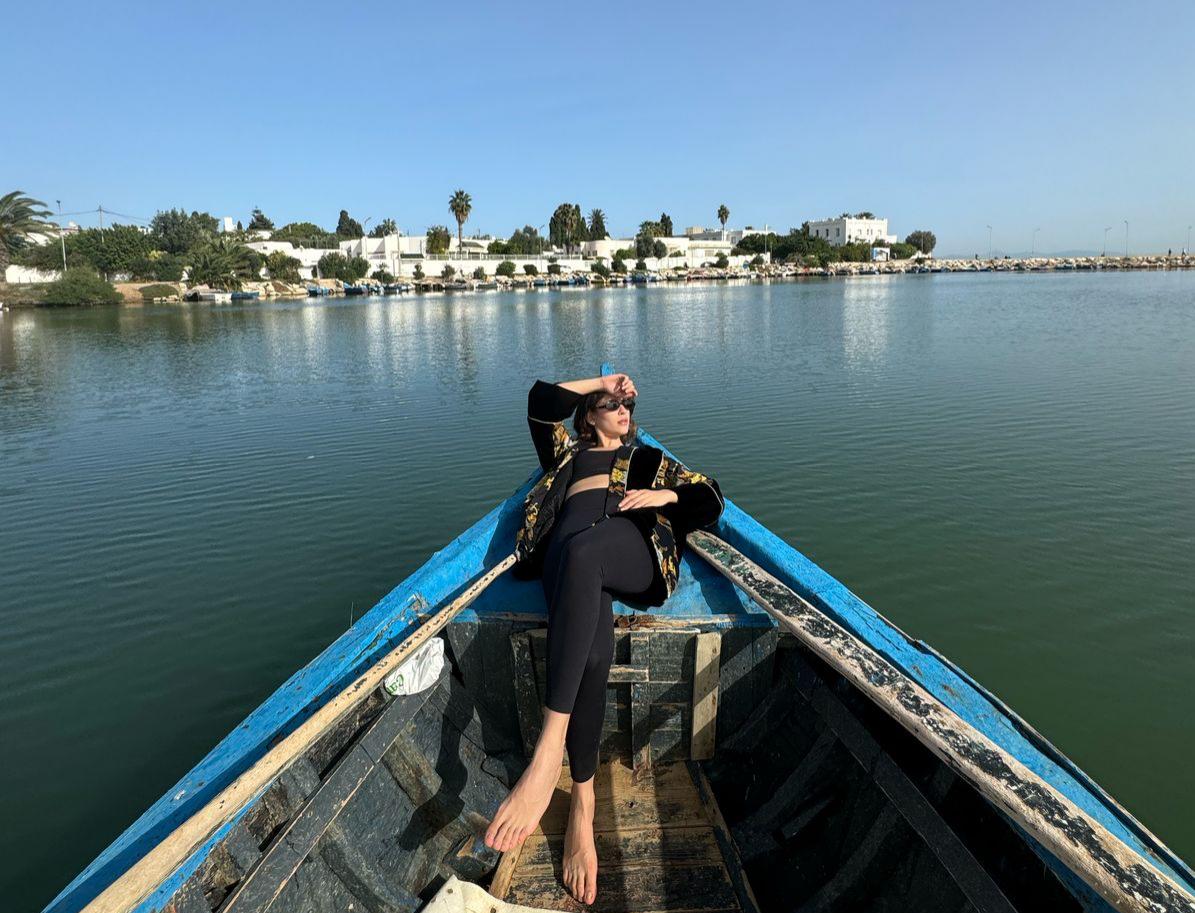The impressive Punic Port of Carthage
-
M&S
- Posted on

The impressive Punic Port of Carthage
The ancient city of Carthage, located in modern-day Tunis, Tunisia, was once a thriving center of trade and culture in the Mediterranean.
Founded in the 9th century BCE (Before Christian Era) by Phoenician settlers from Tyre, Carthage rose to power and became a formidable rival to Rome. At the heart of Carthage’s success was its impressive Punic port, which facilitated commerce, military expeditions, and cultural exchange.
Carthage’s port, known as the Cothon, was an architectural marvel of its time. Unlike typical harbors, the Cothon was uniquely designed as a circular harbor that protected ships from storms and allowed for easy navigation. Surrounded by quays, it could accommodate numerous vessels, ranging from merchant ships to war galleys. This strategic design not only showcased the ingenuity of Punic engineering but also emphasized the significance of maritime trade in Carthaginian society.
The Cothon served as the main hub for trade routes that connected Carthage to various parts of the Mediterranean, including Sicily, Sardinia, and the Iberian Peninsula.
The abundant natural resources of these regions, particularly silver, lead, and agricultural products, were funneled through the port into Carthage. This trade network contributed significantly to the city’s wealth and power, allowing it to flourish as one of the most influential cities of the ancient world. The port was also crucial during the Punic Wars, particularly in the first war against Rome (264-241 BCE). Carthage relied heavily on its naval prowess, with the Cothon serving as the primary launch point for military vessels. The Carthaginian fleet, though ultimately defeated, showcased impressive naval tactics and shipbuilding technology during these conflicts. The battles fought on and near the waters of the Cothon highlighted its strategic importance and the stakes involved in controlling this critical maritime hub.
Despite its glory, the decline of Carthage began after the Third Punic War (149-146 BCE), leading to the city’s eventual destruction by Roman forces. The Romans recognized the importance of the port and built upon the existing infrastructure, transforming it into a Roman harbor. Over time, the significance of the port diminished as the region underwent various political and cultural changes. Today, the ruins of ancient Carthage, including remnants of the Cothon, offer a glimpse into the city’s storied past.
“Carthage’s legacy continues to resonate in modern Tunisia”
Archaeological excavations have revealed not only the port itself but also various artifacts, warehouses, and shipyards that illustrate the bustling activity that once defined this area. Visitors to Carthage can explore these historical sites and imagine the vibrant trade life that flourished in the ancient port. Carthage’s legacy continues to resonate in modern Tunisia, where the rich history of the Punic port serves as a reminder of the city’s importance in the ancient world.
As we reflect on the remarkable achievements of Carthaginian society, we gain a better understanding of how trade, maritime prowess, and strategic planning played crucial roles in shaping the destinies of ancient civilizations. In conclusion, the Punic port of Tunis stands as a testament to the ingenuity and resilience of the Carthaginians. Its architectural brilliance, economic significance, and military importance mark it as a key player in the narrative of ancient Mediterranean history.
Carthage may have fallen to its rivals, but its impact on trade and naval warfare continues to be studied and celebrated to this day.
L’impressionnante cité de Carthage
“Au coeur du succès de Carthage résidait son port.
La ville antique de Carthage, située près de l’actuelle Tunis, en Tunisie, était autrefois un centre florissant de commerce et de culture en Méditerranée. Fondée au IXe siècle av. J.-C. par des colons phéniciens de Tyr, Carthage a connu une ascension fulgurante et est devenue un rival redoutable de Rome. Au cœur du succès de Carthage se trouvait son impressionnant port punique, qui facilitait le commerce, les expéditions militaires et les échanges culturels. Le port de Carthage, connu sous le nom de Cothon, était un chef-d’œuvre architectural de son époque. Contrairement aux ports typiques, le Cothon était conçu comme un port circulaire qui protégeait les navires des tempêtes et permettait une navigation aisée. Entouré de quais, il pouvait accueillir de nombreux vaisseaux, allant des navires marchands aux galères de guerre.
Ce design stratégique non seulement mettait en avant l’ingéniosité de l’ingénierie punique, mais soulignait également l’importance du commerce maritime dans la société carthaginoise. Le Cothon servait de principal centre pour les routes commerciales qui reliaient Carthage à diverses parties de la Méditerranée, y compris la Sicile, la Sardaigne et la péninsule ibérique. Les ressources naturelles abondantes de ces régions, en particulier l’argent, le plomb et les produits agricoles, étaient acheminées par le port vers Carthage.
“Ce réseau commercial a contribué de manière significative à la richesse et au pouvoir de la ville, lui permettant de prospérer en tant qu’une des villes les plus influentes du monde antique.”
Ce réseau commercial a contribué de manière significative à la richesse et au pouvoir de la ville, lui permettant de prospérer en tant qu’une des villes les plus influentes du monde antique. Le port était également crucial durant les guerres puniques, notamment lors de la première guerre contre Rome (264-241 av. J.-C.). Carthage comptait énormément sur sa puissance navale, le Cothon servant de point de lancement principal pour les navires militaires. La flotte carthaginoise, bien que finalement vaincue, a démontré des tactiques navales impressionnantes et une technologie de construction navale lors de ces conflits. Les batailles livrées sur et près des eaux du Cothon ont mis en évidence son importance stratégique et les enjeux liés au contrôle de ce carrefour maritime critique. Malgré sa gloire, le déclin de Carthage a commencé après la troisième guerre punique (149-146 av. J.-C.), conduisant à la destruction éventuelle de la ville par les forces romaines. Les Romains ont reconnu l’importance du port et ont bâti sur l’infrastructure existante, le transformant en port romain. Au fil du temps, l’importance du port a diminué alors que la région subissait divers changements politiques et culturels. Aujourd’hui, les ruines de l’ancienne Carthage, y compris les vestiges du Cothon, offrent un aperçu du passé riche de la ville. Les fouilles archéologiques ont révélé non seulement le port lui-même, mais aussi divers artefacts, entrepôts et chantiers navals illustrant l’activité animée qui définissait autrefois cette zone. Les visiteurs de Carthage peuvent explorer ces sites historiques et imaginer la vie commerçante vibrante qui prospérait autrefois dans le port antique.
“ L’héritage de Carthage continue de résonner dans la Tunisie moderne, où la riche histoire du port punique sert de rappel de l’importance de la ville dans le monde antique.“
L’héritage de Carthage continue de résonner dans la Tunisie moderne, où la riche histoire du port punique sert de rappel de l’importance de la ville dans le monde antique. En réfléchissant aux réalisations remarquables de la société carthaginoise, nous comprenons mieux comment le commerce, la puissance maritime et la planification stratégique ont joué des rôles cruciaux dans le façonnement des destins des civilisations anciennes.
En conclusion, le port punique de Tunis se dresse comme un témoignage de l’ingéniosité et de la résilience des Carthaginois. Son éclat architectural, son importance économique et son importance militaire en font un acteur clé dans la narration de l’histoire méditerranéenne antique. Carthage a peut-être été vaincue par ses rivaux, mais son impact sur le commerce et la guerre navale continue d’être étudié et célébré jusqu’à ce jour

